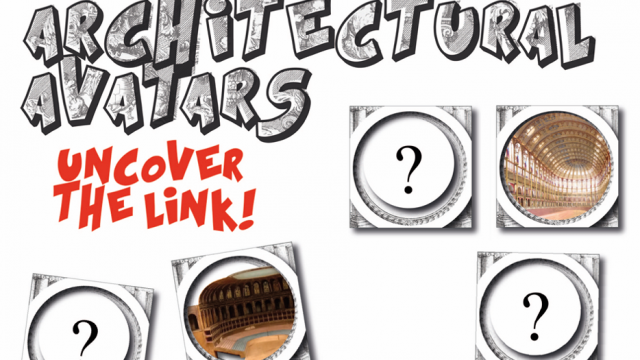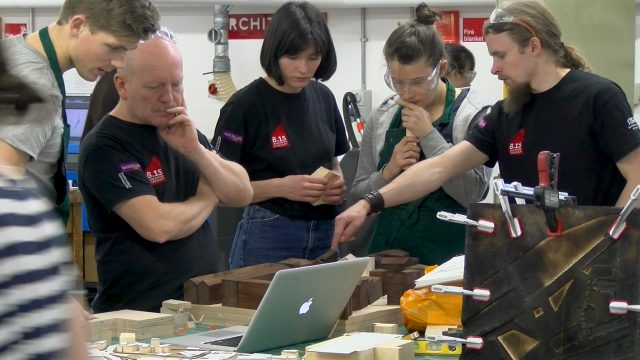The Architectural Association is a Network Partner in Architectural models in context: creativity, skill and spectacle, an AHRC-funded research network hosted at the V&A. This post has been written by Ed Bottoms, Archivist and Tutor at The Architectural Association.
In 2013 one of the Architectural Association’s students constructed a giant model of an imaginary favela, inhabited by an illegal mining community and situated on a tiny island just off the Mexican coast [fig 1]. The model was approximately 2 meters cubed and featured a bewildering array of different materials and a highly sophisticated network of LED lights, programmed to flicker in set sequences. Filmed using greenscreen techniques and spliced with internet footage and photography, the model took on a digital life. The resulting documentary ‘evidence’ was then submitted via multiple email accounts to Google Earth who unwittingly transformed the fantasy into a virtual reality, allowing users to zoom in and browse the re-modelled island of Aditnalta.

Whilst not all the architectural models in the AA Archives quite so elegantly reflect contemporary digital concerns, one of the clear characteristics of our collection is a tendency towards the experimental and exploratory. Students often have more luxury to question and redefine ‘the model’ than permitted within the formal constraints of an architectural office – with the result that not only do our collections contain a full size, functioning pinball machine [fig 2] but also a beautiful hand printed silk kimono [fig 3].


Such experimentation is not just restricted to recent decades but arguably goes back to some of our oldest surviving models from the 1950s and 1960s, one particularly engaging example being the design for a steel prefabricated structural system by Andrew Holmes (subsequently adapted by Richard Rogers for the Inmos Microprocessor Factory, Newport, 1982-7). This was presented to a 1967 AA jury in the form of a children’s, airfix-like kit form, complete with set of instructions for self-assembly [fig 4].

Cutting edge experimentation and innovation, however, bring a whole set of problems. Increasingly our students are using a myriad of different software and a wide range of rapidly developing technologies and materials, including 3D printing and robotic fabrication – yet the literature and advice available for museum, conservation and archive professionals often lags some way behind. At present we do not know whether or not, for example, the intricate 3D ‘nylon’ and ‘sandstone’ powder printed models favoured by students just 7 or 8 years ago will have degraded to dust within a decade [fig 5].

Such concerns are amplified, when the issue of obsolescence of software and hardware is considered – increasingly we are seeing models incorporating digital aspects (and indeed printed from digital files). In twenty years’ time, while the physical model of Aditnalta will be preserved in the AA Archives will it have lost much of its context if the digital files which captured its presence on Google Earth cannot be accessed?
More blog posts from the Architectural Models Network can be found here.
To find out more about the network visit our project page.


